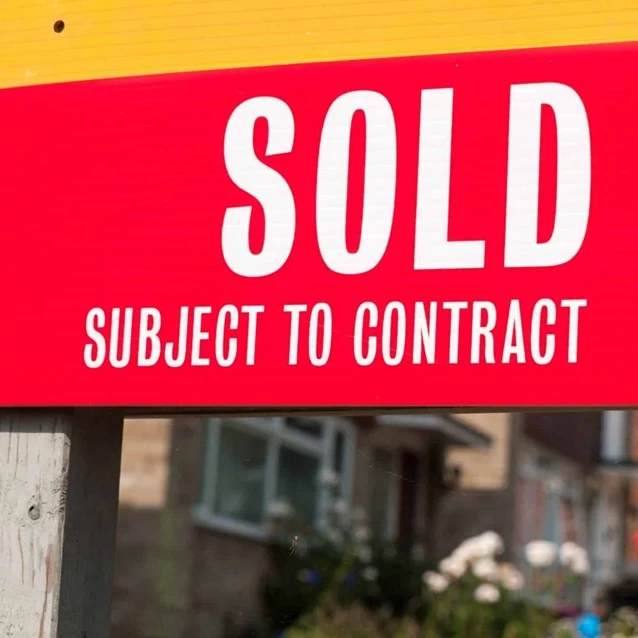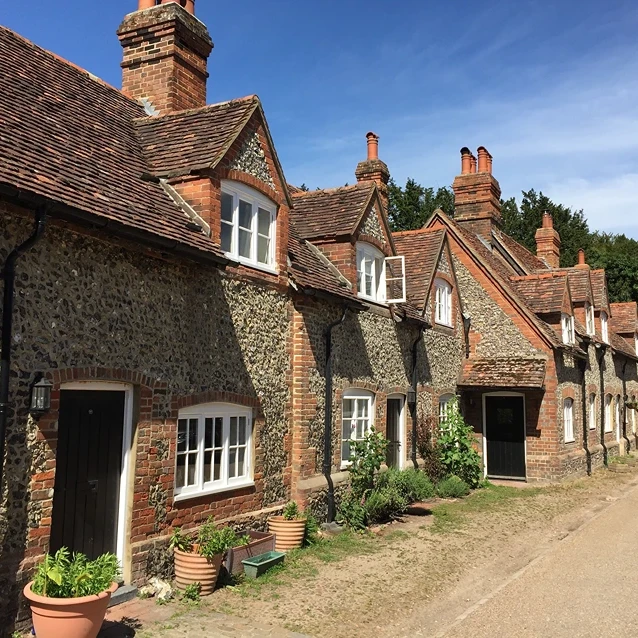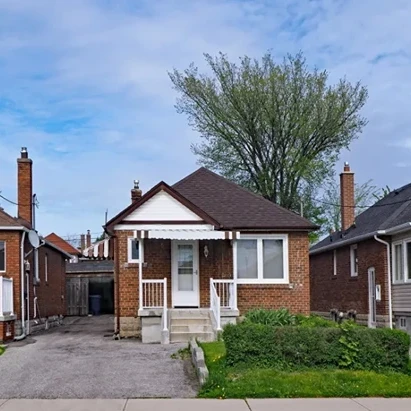Delve into the fabric of the UK’s landscape with a closer look at the diverse tapestry of property types that define our living spaces and investments. From the quintessential charm of bungalows and cottages to the sleek lines of modern flats and apartments, discover what sets each residential property type apart and how they form the backbone of Britain’s housing market.
What Are the Different Types of Residential Properties in the UK?
When diving into the diverse tapestry of the UK property market, it’s essential to understand the residential property classification, encompassing a broad spectrum of dwellings each defined by its unique characteristics. From the compact convenience of flats and apartments to the distinct charm of cottage-style houses, each property type caters to individual preferences and needs.
How are flats and apartments classified in the UK property market?
Flats are the most economical choice for many in the UK, particularly appealing to singles and small families due to their affordability. In the UK, flats are typically self-contained residential units located within larger buildings, often sharing common areas like gardens, hallways, and communal entrances. Apartments often refer to similar setups but may allude to a more luxurious or modern standard of living. Various types of flats in the UK include purpose-built flats, converted flats—those crafted from larger properties—studio flats with open-plan living, and maisonettes which offer two-storey living with some semblance of the privacy of a house.
What distinguishes a terraced house from other residential property types?
Terraced houses represent rows of uniform homes, each one an individual property within a continuous line. They are a staple of urban landscapes, particularly in industrial towns, and they share walls with their neighbours on either side. This arrangement contrasts with semi-detached houses, which share only one wall, while detached houses stand alone without any adjoining properties, providing greater privacy but often commanding higher prices. One variant of terraced housing, the end-of-terrace house, is positioned at either end of the row, benefitting from just one shared wall and typically offering more space and potentially greater value.
What features define bungalows and cottage-style houses in the UK?
Bungalows are distinct for being single-storey homes, offering accessible living without the challenge of stairs. Their origins can be traced back to a Bengali-style of architecture, and in the UK, they have a reputation for being more affordable, though sometimes more challenging to sell due to high demand for multi-storey homes. This challenge is not unique to bungalows; leasehold properties harder to sell face similar difficulties. The complexities of lease agreements and the potential for high service charges can deter potential buyers, making these properties less attractive in a competitive market. Cottages, on the other hand, evoke a sense of quaint, rural charm. The term in the modern sense often refers to urban houses that mimic traditional cottages, which typically featured thick stone walls and thatched roofs, suited to more bucolic settings.
For a more detailed exploration of the different types of houses within the UK’s residential property landscape, Petty Son and Prestwich’s insightful article on types of property offers valuable information. Whether you’re envisioning life in a trendy loft apartment, a characterful end-of-terrace house, or a cosy bungalow, understanding these classifications ensures you’re well-equipped to navigate the property market and pinpoint your ideal home.
What Are the Characteristics of Commercial and Industrial Properties?
The primary categories of commercial properties are retail, office, leisure, and healthcare facilities, each serving businesses in unique ways. Retail spaces accommodate various kinds of shops and stores, designed to attract and serve customers efficiently. Office buildings are tailored to the needs of businesses seeking professional workspaces for their employees, providing facilities that cater to different organizational sizes and structures. Leisure properties include gyms, cinemas, and restaurants, designed for public entertainment and enjoyment. Healthcare facilities, comprising clinics and hospitals, are specialized properties set up to provide medical services to the population.
In contrast, industrial building types cater to very different needs. Industrial buildings are primarily used for manufacturing, warehousing, distribution, and production. These facilities are often characterized by large open spaces, high ceilings for machinery or storage racks, strong floor loadings to accommodate heavy equipment, and sometimes, advanced infrastructure necessary for specialized industrial processes or logistics.
Industrial properties are distinct from other real estate categories primarily because of their functionality and design. They are built with the intention of supporting heavyweight activities, incorporating wide-spanning layouts for ease of transportation of goods, and often located strategically in relation to transport links for efficient distribution.
In Scotland, and more broadly in the UK, the commercial and industrial property segment is a critical part of the economy. Businesses rely on these varied spaces to operate effectively, whether it’s a start-up requiring a sleek new office environment or an established corporation in need of expansive warehouse space to manage its inventory efficiently. Understanding the types of commercial and industrial properties available is vital for business owners, investors, and commercial real estate professionals navigating the Scottish property market.
How Does Ownership Vary With Different Property Types?
When diving into the diverse world of property ownership, it becomes clear that the type of property you own in the UK profoundly influences the rights and responsibilities you hold. The distinction between freehold and leasehold properties is one such pivotal difference.
What are the key differences between freehold and leasehold properties?
Freehold properties grant the owner complete control over the land and building indefinitely. For those interested in exploring the advantages and disadvantages of different freehold property types, freehold property types offer a comprehensive overview. Understanding these distinctions can help potential buyers make informed decisions about their property investments. On the other hand, leasehold estates offer the right to occupy and use a property for a specific term, with ownership eventually reverting to the freeholder unless the lease is extended.
Freehold ownership means holding the title to the land and the building that sits upon it, giving you the power to make decisions regarding the property without leasehold constraints. Essentially, you own the property outright, with no time limit on your tenure. For freeholds, responsibilities tend to be broader, including maintenance and repairs of the entire building and grounds.
Leasehold, meanwhile, typically involves paying ground rent to the freeholder and following certain conditions detailed in the lease. This could involve restrictions on what changes can be made to the property or obtaining permissions for certain alterations. Leaseholds often come with service charges, which are payments towards the upkeep of the common areas if the property is part of a larger building, like a flat in a block.
How does land ownership in the UK influence property rights and responsibilities?
Land ownership in the United Kingdom sets out the legal boundaries not only of property dimensions but also of what you can do with the property. Freeholders enjoy more liberty to modify, build, or even destroy structures on their property, (within planning regulations), whereas leaseholders may need consent from the freeholder to make any significant changes.
The type of ownership also influences financial planning; in the case of leaseholds, it’s crucial to consider the length of the lease, as properties with short leases can depreciate and be challenging to sell or secure a mortgage against. Meanwhile, freehold properties, being less complex in a legal sense, can be more straightforward in terms of saleability and offer the owner more certainty over their real estate assets.
In Scotland, understanding the types of land ownership is crucial. For instance, a unique Scottish twist on property purchase is the ‘freehold’ or ‘feudal’ tenure, which, while largely abolished by the Abolition of Feudal Tenure etc. (Scotland) Act 2000, can still have implications on existing properties.
To put it succinctly, navigating the Sea of Scottish property types is not just about selecting a dream home or investment; it’s about understanding the bedrock of rights, restrictions, and responsibilities that come with different land ownerships. For a deeper dive into understanding different property types and ownership rights in the UK, be sure to explore this insightful resource on property types and their features.
What Investment Potential Do Various Property Types Hold?
When exploring real estate investment strategies, it’s essential to recognise that each property type harbours the unique potential for return on investment. So, what strategies should investors consider for different types of residential properties?
Residential Investment Strategies
For starters, those interested in buy-to-let properties typically focus on flats, terraced, or semi-detached houses due to their high demand among renters, especially as these properties cater to families, professionals, and students. Buy-to-let investments involve purchasing residential property to rent it out and can provide regular income as well as capital appreciation over time.
On the other hand, the holiday lettings market presents opportunities for properties located in tourist-friendly locations. Holiday lettings can lead to higher rental yields, especially during peak tourist seasons, but are also subject to off-peak dips and require more hands-on management for short-term leases.
Flats, often the most affordable housing option, are ideal for those getting started in real estate investment. They cater to singles and small families seeking urban living convenience. Bungalows and cottages, which carry a distinctive charm, might appeal to niche markets such as retirees or those longing for a rustic home, potentially allowing for a bespoke pricing strategy. And while cottages have largely transformed from their traditional rural archetype to urban cottage-style houses, their quaint aesthetics and perceived warmth still drive considerable market interest.
To compare, detached houses hold their value for offering privacy and space, translating to a higher price point. Semi-detached and terraced houses, particularly end-of-terrace homes, are popular for combining affordability with the desired perception of a house rather than an apartment or flat.
Mansion houses sit at the pinnacle of the residential property ladder, emanating exclusivity and luxury, presenting the largest and most prestigious investment, both in space and financial commitment.
Comparing Investment Types
Now, how do buy-to-let properties and holiday lettings stack up against each other in terms of investment potential?
Buy-to-let properties generally offer long-term stability and can build equity over time. The consistent cash flow from monthly rental income can be appealing, but investors need to consider factors such as property maintenance, finding reliable tenants, and adhering to tenant laws.
Holiday lettings can potentially provide higher short-term returns but come with greater variability and dependency on tourism trends. These properties require more active management, considering different guest bookings, property cleaning, and marketing efforts to maintain occupancy.
Investors looking to delve deeper into these strategies and types of properties should expect a certain degree of involvement and understanding of the market. By evaluating and capitalising on the unique characteristics of each property type, investors can tailor their approach to meet their financial goals and risk appetites.
To comprehend the full spectrum and nuances of investment potential, it’s advantageous to subscribe to insightful property blogs and keep abreast of the varying factors influencing market movements. Constant learning and networking can enlighten enthusiasts and investors alike on how best to navigate the ever-changing landscapes of real estate.
What Should Buyers Know About the Survey and Valuation of Properties?
When considering a property purchase, it’s essential to have both a survey and a valuation conducted to ensure you’re making a well-informed decision. Surveys for residential purchases are crucial as they provide a detailed examination of a property’s condition, flagging any major issues or potential repairs that may be required. These surveys come in various forms:
HomeBuyers Report:
- Non-intrusive survey offering an overview of the property’s state and highlighting significant problems.
Building Survey:
- Comprehensive survey suitable for older or non-standard properties, detailing structural integrity and advice on repairs.
Condition Report:
- Basic outline of the property’s condition, highlighting urgent defects.
What types of surveys are available for residential properties, and what do they assess?
Surveys for residential properties range from simple condition reports to full structural surveys, assessing everything from the stability of the foundations to the quality of the roof.
When it comes to property valuation methods, there are several commonly used approaches:
- Comparative Method: Compares the property with similar ones that have recently sold in the same area.
- Income Method: Assessment based on the potential income the property can generate, often used for rental properties.
- Cost Method: Evaluation based on the cost of rebuilding the property, plus the value of the land.
Regarding different property types, such as flats, detached, or terraced houses, valuations consider factors like size, location, and market demand. For example, flats are typically valued based on their location and shared facilities, while detached houses are often valued higher due to their size and privacy.
For prospective buyers, understanding the intricacies of these surveys and valuations is essential for making confident and informed property purchases.
How Can Property Fraud Be Prevented in Real Estate Transactions?
When engaging in property transactions, especially in a developed market like Scotland’s, preventing fraudulent activity should take centre stage. So, what measures can be undertaken to ensure you’re not caught out by dishonest schemes?
Firstly, education is your ally. Familiarise yourself with common property scams to understand the telltale signs of fraud. These could range from false property listings to deceptive investment opportunities. Buyers and sellers should also verify the credentials of estate agents and solicitors, ensuring they are registered with the appropriate regulatory bodies.
Stay vigilant: scrutinise every document for inconsistencies or irregularities. If a transaction feels overly rushed or if there is pressure to bypass standard processes, it’s worth stepping back and questioning the intentions behind these red flags.
But awareness alone isn’t enough. Enhance your defence against property fraud by adopting concrete measures. Secure title insurance to protect against title fraud; this is an instance where someone illegally uses your property for collateral or fraudulently sells it without your consent.
For those transacting digitally, robust cybersecurity practices are essential. Strong passwords, secure networks, and a good understanding of safe online behaviour can reduce the threat of digital real estate scam exposure.
In summary, the most effective way to prevent property fraud involves a mix of educating yourself on the risks, performing due diligence, securing the necessary insurance, and practising safe online conduct. With these steps, you’ll be more equipped to navigate the Scottish property market with confidence, ensuring you stay a step ahead of unscrupulous actors.
What Role Do Property Types Play in Estate Planning and Asset Management?
When starting on your journey through estate planning and asset management, it’s crucial to understand how various property types fit into this intricate puzzle. Different property types serve distinct roles, not only contributing to the diversification of your assets but also impacting the financial planning aspects of your estate.
Different property types are indeed cornerstone elements in estate planning and asset diversification. For instance, residential properties like flats or bungalows often represent lower-risk, stable investments that can generate consistent rental income. On the other hand, commercial properties, such as retail spaces or office buildings, offer the potential for higher yields but also come with unique management challenges and a different risk profile.
When it comes to building a real estate portfolio, the financing methods you choose should align with the type of property you are investing in. Flats and apartments, being relatively affordable and often high in demand for rental, are well-suited for mortgage leveraging in urban areas. For larger investments like detached houses or commercial properties, investors might look towards more substantial financing options such as commercial loans or investment partnerships.
In terms of residential properties, the UK market is diverse. There are flats, terraced homes, detached and semi-detached houses, cottages, and bungalows—each with its own set of characteristics that appeal to different buyers and serve varying purposes in an asset management plan. For instance, while flats might be the go-to for urban investors seeking to capitalise on the rental market, detached houses could be a cornerstone for those looking for long-term capital growth through private residence.
Moreover, the financing methods for these different property types will also differ. Those investing in residential properties may rely heavily on traditional mortgages; however, when you’re acquiring a bungalow or a cottage, the financing terms might be better if they are tailored to the unique market position and selling points of these properties.
As you delve deeper into real estate financing methods, remember that the choices you make will shape your property network building efforts. Choosing the right type of property and financing method can widen your network of estate agents, financial advisors, and property developers, all bringing valuable insights and opportunities to your doorstep. For a more comprehensive understanding of the different property types, their roles in estate planning, and the financial implications carried with each, direct your browser here to gather more in-depth information.
Flats, comprising various forms like studio apartments and maisonettes, can be seen as the entry point into the property market for many, ideal for singles and smaller families. Bungalows offer a unique selling point due to their single-story design and are often sought after by an older demographic. Cottages, once rural, now fit into the urban fabric as charming, cottage-style homes. Terraced houses, along with end-of-terrace homes, provide continuity in urban streetscapes. Semi-detached homes share walls and are a common sight across the UK, while detached houses offer exclusivity and privacy at a premium.
Mansion houses, though not as common, represent the pinnacle of prestige and property size, often entailing a different approach to estate planning due to their value and maintenance needs. By skillfully selecting the property type, investors and homeowners can align their real estate interests with their long-term estate objectives, weaving a network of assets that supports their financial goals.
Property types aren’t just buildings; they are strategic assets that, when leveraged correctly in estate planning and asset management, can produce substantial financial security and growth—there’s a fit for every investor, regardless of where they stand in the property ladder.
How Do External Factors Influence the Value of Different Property Types?
When house-hunting or considering a sale, it’s crucial to understand that the value of your property is significantly influenced by external factors. For instance, neighbourhood amenities such as shopping areas, parks, gyms, and entertainment venues can greatly bolster the appeal of a property. In Scotland, as elsewhere, properties near a rich array of local amenities often fetch higher prices due to their convenience and lifestyle offerings.
Local schools play an integral part in shaping house choices, particularly for families. Quality of education is often a top priority, and properties in the catchment areas of high-performing schools can see their values skyrocket as demand increases. On top of that, transport links have a profound effect on property values. Well-connected areas, with easy access to buses, trains, and major roads, lead to higher desirability for both residential and commercial properties, leading to increased value.
Let’s delve into the specifics of how these external factors play out in Scotland’s dynamic property landscape.
Local Amenities and Schools
Living within a stone’s throw of convenient amenities is more than just a perk; it’s a game-changer for property desirability. A house or flat that’s a quick jaunt away from grocery stores, cinemas or restaurants can be a magnet for potential buyers or tenants, looking to blend easy access with a comfortable lifestyle. Similar is the case with schools – a property that sits within the boundaries of an outstanding school is not just a home; it’s a future investment for the family and their children’s education. As such, these houses can command higher asking prices and are available on the market.
Transport Links and Infrastructure Projects
In Scotland, transport links are just as influential in shaping property values. Major infrastructure projects, such as new railway lines or upgraded motorway connections, can be transformative. Properties in areas earmarked for such developments often see an uptick in interest long before the first shovel hits the ground. This heightened attention can result in substantial appreciation in the property’s value, positioning owners for profitable sales or increased rental incomes.
For an in-depth look at how these elements impact property values and more, prospective sellers or buyers can gather valuable insights from resources like Sell House Fast. With expert commentary and analysis, such platforms can equip property stakeholders with the knowledge to navigate the market’s waves skillfully.
In conclusion, when it comes to property types in Scotland, it’s not just the bricks and mortar that count. The surrounding environment, accessibility to key services, and future developments all weave into the story of a property’s value. Savvy homeowners and buyers keep these factors in their sights, ensuring that when it comes to property transactions, they are making informed decisions that pay dividends in the long run.
What Are the Trends and Predictions for the Scottish Property Market?
Exploring the Scottish housing market’s current traction and glancing into the crystal ball for forecasts, we uncover key trends and predictions that are moulding the market’s future. A question on many a mind is how recent developments such as Brexit are influencing property types in hot demand throughout Scotland.
Since the Brexit referendum, uncertainty has rippled through the UK’s economy, with tangible effects on the Scottish property market. What’s become clearer is that the vote has impacted both the value and desirability of various property types. Analyzing patterns, we see that flats have remained an affordable option, particularly in urban centres, attracting singles and small families seeking city life on a budget.
When it comes to Brexit’s impact, a cautious sentiment initially resulted in a market cooldown; however, resilience in the market is evident with signs of stabilization and, in some areas, growth. The private rental sector in particular has shown buoyancy, continuing to provide attractive opportunities for investors thanks to sustained demand for rental properties.
Zooming into the kaleidoscope of property types, there has been a slight pivot towards more affordable, less risky investments such as flats and semi-detached houses. These offer a safer bet in uncertain times. On the other spectrum, luxury properties such as detached and mansion houses face a more scrutinous market, with demand often impacted by changes in economic confidence.
The crystal ball for trends and predictions suggests a growing inclination towards energy-efficient homes and smart technology integration, factors likely to influence future property values. Furthermore, industry forecasters anticipate a bounce-back of the housing market as political waters smooth and economic strategies align post-Brexit.
Predictive insights are gold dust for anyone involved in the Scottish property market, whether you’re buying, selling, or simply staying tuned to the pulse of property trends. Want to know more about the types of properties available across the UK? Deep dives into residential classifications provide a roadmap for navigating an ever-shifting market landscape.
Wrapping up, the Scottish property market is a living, breathing ecosystem, shaped by political, economic, and social forces. Keen observers will watch closely as Brexit continues to settle, and new trends emerge, defining the demand for property types in an evolving post-Brexit Scotland.
What Defines Various Property Types?
In the UK, understanding different property types is central to navigating the housing market.
What distinguishes a flat from other residential properties? A flat is a self-contained housing unit within a larger building, offering affordability and convenience, popular with singles and small families. It is typically contained within a single storey, sharing common areas such as hallways and gardens with other units.
For example, a maisonette is a type of flat featuring its own private entrance, often extending over two levels, and can exist as part of a larger building or be attached to another property. Studio flats are a one-room living space that combines the bedroom, living room, and kitchen, whereas maisonettes often have separate bedrooms on a different level.
The distinction between flats and apartments in the UK tends to refer to the level of luxury, with ‘apartment’ sometimes being used for high-end flats, although the terms are largely interchangeable. Beyond just flats and apartments, British property classification offers a richer lexicon to describe residential dwellings.
Terraced houses, forming a uniform row of connected homes, are prevalent in the UK’s urban landscapes. Each home is part of a contiguous block, sharing side walls with its immediate neighbours. End-of-terrace houses are similar but located at the end of the row, sharing only one wall with a neighbour and thus having more side space and often a larger garden.
Bungalows provide single-storey living and are particularly appealing for those desiring fewer stairs, while for those in search of expanse and privacy, detached houses stand alone without sharing walls with neighbouring properties. A semi-detached house splits the difference, sharing one wall with an adjoining property.
Cottage-style houses in the UK capture the quaint charm of traditional cottages but are now common in both rural and urban settings. They often retain stylistic features like thick walls and cosy proportions, but unlike historical cottages, they are no longer limited to rural areas.
For those seeking grandeur, mansion houses represent the epitome of luxury and scale. These are the largest residential properties, offering expansive space and bespoke amenities.
But how does ownership factor into these property types? Freehold and leasehold are the primary types of property ownership in the UK, which dictate the rights and responsibilities of the occupants. Freehold properties, found among houses and bungalows, mean you own the property outright, including the land it’s built on. Leasehold, more common in the context of flats, involves ownership of the property for the duration of the lease agreement with the freeholder.
In Scotland, types of land ownership can play a crucial role in both legal rights and the culture attached to property purchasing. Scotland has distinctive legal processes and land tenure systems which buyers need to be aware of before investing in Scottish real estate.
Understanding these property types provides a solid foundation when looking to buy or sell property in the UK. With a diverse range of options available, from the simplicity of a flat to the grandeur of a mansion house, there’s a property type to suit nearly every need and lifestyle.
Conclusion
Navigating the rich tapestry of the UK’s property types is like opening a box of assorted chocolates; you’re never quite sure what you’ll get, but each has its unique appeal. From the quintessential charm of terraced homes to the bespoke allure of industrial spaces, we’ve demystified the classifications, investment potential, and the ever-so-critical facets of prevention against property fraud.
Understanding these layers not only enriches your knowledge but sharpens your acumen, whether for purchase, investment, or planning. And while external factors and market trends may sway the values and demand of these properties, your newfound insights equip you for the dynamic playground of real estate. In Scotland’s spirited property market, such wisdom is not just power—it’s your guiding north star in a landscape filled with promise and opportunity.
FAQ
What defines flats and apartments in the UK property market?
In the UK property market, flats are self-contained residential units within larger buildings, sharing common areas like gardens and hallways. Apartments typically refer to similar setups but might suggest a more luxurious standard of living. Flats can be purpose-built, converted, studio, or maisonettes, each offering different living experiences.
How does a terraced house differ from other residential properties?
Terraced houses are individual homes that form a continuous line, sharing walls with neighbours on either side. This is in contrast to semi-detached houses, which share only one wall, and detached houses, which stand alone. End-of-terrace houses are at the row’s ends, often having larger space and only one shared wall.
What are the characteristics of bungalows and cottage-style houses in the UK?
Bungalows are single-storey homes known for accessibility, often more affordable yet sometimes harder to sell due to the demand for multi-storey homes. Cottage-style houses in the UK evoke quaint charm, usually incorporating elements of traditional rural cottages like stone walls and thatched roofs, desirable for their aesthetic appeal.
What differentiates commercial from industrial properties?
Commercial properties like retail spaces, offices, leisure, and healthcare facilities are tailored to serve businesses and customers efficiently in their respective industries. Industrial buildings are primarily for manufacturing or distribution, with designs supporting heavy equipment and activities, and strategic locations for transport links.
How does property ownership affect rights and responsibilities in the UK?
Property ownership in the UK influences rights and responsibilities significantly. Freehold properties provide complete and indefinite control. Leasehold properties offer temporary occupancy rights, often with conditions like ground rent and service charges, and may require permissions from the freeholder for alterations.
Robbie Jamieson
Robbie’s passion for real estate extends beyond the conventional, bringing fresh and dynamic ideas to the table. His expertise in leveraging online platforms ensures that your home receives the attention it deserves in today’s competitive market.
Related Posts
Can You Fix an Unmortgageable House
August 29, 2024
Struggling with unmortgageable property? Find out what makes a property hard to finance and how to navigate the sale process effectively.
How Much Does Subsidence Devalue Property
August 21, 2024
Concerned how much subsidence could devalue your property? Get expert insights on the financial impact and solutions in our guide.
How Long to Sell a House? Quick Sale Insights
August 20, 2024
Curious about how long it takes to sell a house? Read on for expert insights and guidance on the Scottish market.
How Many Viewings to Sell a House
August 16, 2024
Ever wondered how many viewings to sell a house quickly? Get statistics, tips, and strategies for a swift UK property sale.
What Does Sold STC Really Mean for Your Sale
August 15, 2024
Curious about ‘Sold STC’ meaning? Our blog demystifies the term for buyers & sellers navigating UK property sales.
Selling a House Over a Mine Shaft? What You Need to Know
August 9, 2024
Selling your house with a mine shaft? Get expert tips on value assessment, legalities & buyer reassurance. Navigate mine shaft property sales with confidence.
Can You Sell a Leasehold Property Easily
August 2, 2024
Wondering if you can sell a leasehold property in Scotland? Get expert tips on the process & legalities to sell with ease and confidence.
Can You Sell a House with a Mortgage Easily
July 23, 2024
Curious if you can sell a house with a mortgage? Get the facts on legalities and logistics in our latest post.
How Long Does It Really Take to Sell a House
July 15, 2024
Wondering what is the average time to sell a house in Scotland? Get the facts and strategies for a quick sale with our guide.
Do Bungalows Sell Quickly? The Data Will Shock You
July 12, 2024
Wonder if bungalows sell quickly? Our latest post delves into the Scottish market, with tips to expedite your sale.

















